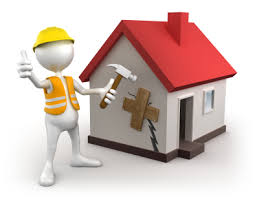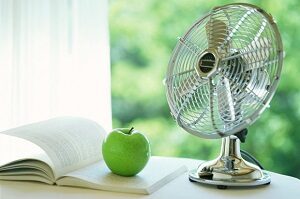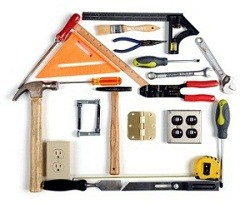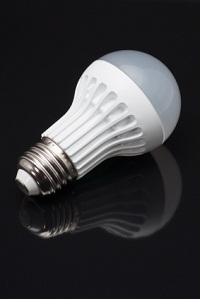
“You’ve just made the largest purchase in your life…it was an investment in your future as well. Now you need to make sure you protect it and take care of it. Be sure to read the following article to have a better understanding and appreciation of how to take care of your home.”
DC Metro Realty Team, Denise Buck & Ed Johnson
Your home is like your body. If you don’t take care of it, you can run into problems.
Take plumbing, for instance. It can clog up, just like your arteries.
By regularly checking your home’s inner and outer workings, you can avoid major problems down the road. But if you’re a new homeowner, what should you be doing? And when?
Steve Hessil, owner of Dr. Plumber, a plumbing firm in Franklin, said work should start as soon as you buy a house (having a home inspection first is a good idea). You’ll want to have an electrician and a plumber come in to make sure everything’s in order and up to code. If you need help with the basics, they can help you figure out how to shut off your gas and make sure your water shut-off valve works properly.
There are some areas of the home that should be inspected roughly once a year; others more often. Some home features should be checked at specific times of the year; others are less urgent and can wait until you have time.
Experts agree that furnaces and AC units are among the most important things to check in a home.
Wayne Abendschein, a comfort specialist at 1st Choice Heating and Cooling in Waukesha, said he’s seeing furnace problems now — in some cases due to neglect.
“For people who haven’t had their furnaces tuned up or looked at…they’re breaking down at this time of year because of the long run cycles we’re having with the weather conditions.”
How often a furnace needs servicing depends on its age, said Kurt Dodge, owner, D & M Heating, Milwaukee.
“Furnaces are like people,” Dodge said. “When you’re young and in good shape, you can get by a little longer before seeing a doctor. A furnace is kind of the same. For the first 10 years, (maintenance) every couple of years is good. As it gets older, things can deteriorate quickly, just like us.” Then they should be checked yearly.
Randy Miller, owner of Allrite Home and Remodeling and S & E Insulation, Milwaukee, said these systems, as well as insulation, should be checked well before you need them.
“Contractors have a tendency to get busy (at certain times of the year) because everyone thinks about these things at the last minute,” he said.
David Pekel, owner of Pekel Construction & Remodeling Inc., Wauwatosa, said that in some cases homeowners can make repairs themselves, but that common sense should prevail.
For electrical issues, “contact a master electrician,” said Pekel, the 2014 president of the National Association of the Remodeling Industry (NARI). “There’s very little homeowners can or should do relative to electricity.”
With furnaces, there’s a bit more leeway. “Just like changing the oil on your car, changing your furnace filter is relatively easy to do,” Pekel said. “Beyond that, rely on a professional.”
He added that homeowners should know their limitations in terms of ability and equipment. While they may be able to tell when their gutters are clogged, that doesn’t mean they have the right equipment and ability to unclog them.
Here’s a checklist of some home maintenance tips from our pros. If a specific timetable isn’t noted, maintenance can be checked any time of the year. Staff at the NARI website,www.milwaukeenari.org, contributed to the list.
Air conditioning: In spring, or when temperatures reach at least 70 degrees, have it tuned up. This can be done every one to two years depending on the unit’s age. Also, clean off the outdoor condenser by spraying it at a 30-degree angle with your garden hose. Clean again in fall.
In summer, clear away shrubbery, grass or debris so you have at least 18 inches of clearance around the unit and 2 feet above it for good air flow. Check and replace air filters throughout the summer and look for ice forming on the refrigerant lines. That indicates a problem.
Caulking and grout: Regularly inspect caulking and grout around tubs, showers and sinks and reapply as needed.
Chimney and fireplace: In summer, have them both checked for soot and creosote buildup. Also check the cap on your chimney, the brickwork and the flashing about every three years.
Exhaust fans: Periodically clean the grill and fan blades.
Fire extinguishers: Once a year, check to make sure they’re fully charged, and recharge or replace them if necessary. Put one on every floor and one very near your kitchen.
Furnace: In spring, summer or early fall, have it tuned up and have a safety inspection. This can be done yearly or every two years, depending on its age. It should also be vacuumed out yearly, and filters in forced air systems should be changed monthly to yearly depending on the system. For boiler heat, bleed radiators in late summer or early fall.
In winter, for high-efficiency furnaces, be sure there’s no snow or ice buildup around the exhaust pipe outside. A blocked pipe could cause your furnace to fail or result in carbon monoxide in your home.
Garbage disposal: Flush with hot water and baking soda.
Gutters: In fall, check to see if they’re clogged. Do this two to three times a year if you have a lot of trees nearby. Put a hose in the gutters and run water to be sure it’s pitched properly for drainage and that downspouts aren’t clogged. Also, make sure downspouts and extensions are in good shape.
Humidity: A few times a year, check moisture with a gauge. Levels should be down, especially in winter when houses sealed up tight.
Insulation: In fall, check your basement for areas with lots of cobwebs. This indicates insects are getting in through gaps that should be filled. Also inspect the top of your interior walls for dark streaks that run horizontally near the ceiling. This can indicate a problem with your insulation or ventilation.
In winter, look at your roof after it snows to see if the snow melts faster than on other homes. Check for ice damming in your gutters and excessive icicles on the outer edge of your roof; they can indicate insulation problems. Also look for excessive condensation on interior windows. Open blinds to help eliminate the problem. If windows get very frosty, it may be time for new ones.
Mold: If you have had any water damage, check for mold. In most cases, you’ll need a pro to resolve this problem.
Home exterior: In spring, look for siding panels that are lose, cracked or worn. Also check your foundation for moisture and cracks that are expanding. Check sidewalks for cracks and lifting, and steps that need repair.
Plumbing: In fall, turn off the valve in your basement for the outside faucet. Then open the faucet outside and and let the water drain out. If it doesn’t stop draining, you need a new valve in the basement.
In winter, check pipes in colder areas of your home to be sure they’re well insulated. Also check pipes on exterior walls in very cold weather. Open cabinet doors if possible to keep them warmer, so they don’t freeze.
Once a year, fill sinks to the top, then let the water run out to see how fast it drains. If you have a two-sided sink and one side fills up when the other drains, you have a partially plugged sink. Have it checked before it gets completely plugged. Once a month, run hot water in your kitchen sink for a few minutes to help keep it from clogging.
Regularly check for running toilets, corroded or leaking pipes, dripping faucets and water pressure. If a faucet runs slow, you may have a problem that could get worse over time. Also check ceilings below bathrooms for drywall damage.
Roof: In spring or summer, look for loose or missing shingles, shingles that are curling and granule loss. If you can easily lift the outer edge of a shingle this time of year, that means the sealant is no longer holding and your roof may need attention. Also look for signs of leaks around vents, skylights and chimneys. If you can, check your roof from the second floor of your neighbor’s home for the best view.
Smoke and carbon monoxide detectors: Check them in spring and fall when you change your clocks.They should be on each floor of your home, and also near gas furnaces, water heaters and dryers.
Sump pumps: In spring, test your sump pump to be sure it’s working. If it’s noisy, it might need to be replaced.
Water heaters: If it’s more than 12 years old, consider replacing it, because they often fail at this age. Also drain it yearly until the water runs clear, then refill.
Windows and doors: In spring, summer or fall, caulk and clean windows. Make sure insulation isn’t popping out around your windows and that you have tight seals.
Between spring and fall, check your attic access door to be sure there’s insulation above it. Also check locks, lubricate hinges and other moving parts, and install rubber or felt strips at the bottom of doors if needed.
Appliances: Occasionally inspect humidifiers and dehumidifiers for water leakage. Regularly vacuum lint from your clothes dryer, check for obstructed dryer vents, vacuum refrigerator condenser coils and give your oven a thorough cleaning at least once a year.
 “After everything that happened in the Market a few years ago, most people decided that ARMs (Adjustable Rate Mortgages) were just plain bad. That isn’t always the case. Don’t write them off until you’ve talked to a lender about all the options available to you. Depending on your situation it might just make sense.”
“After everything that happened in the Market a few years ago, most people decided that ARMs (Adjustable Rate Mortgages) were just plain bad. That isn’t always the case. Don’t write them off until you’ve talked to a lender about all the options available to you. Depending on your situation it might just make sense.”













